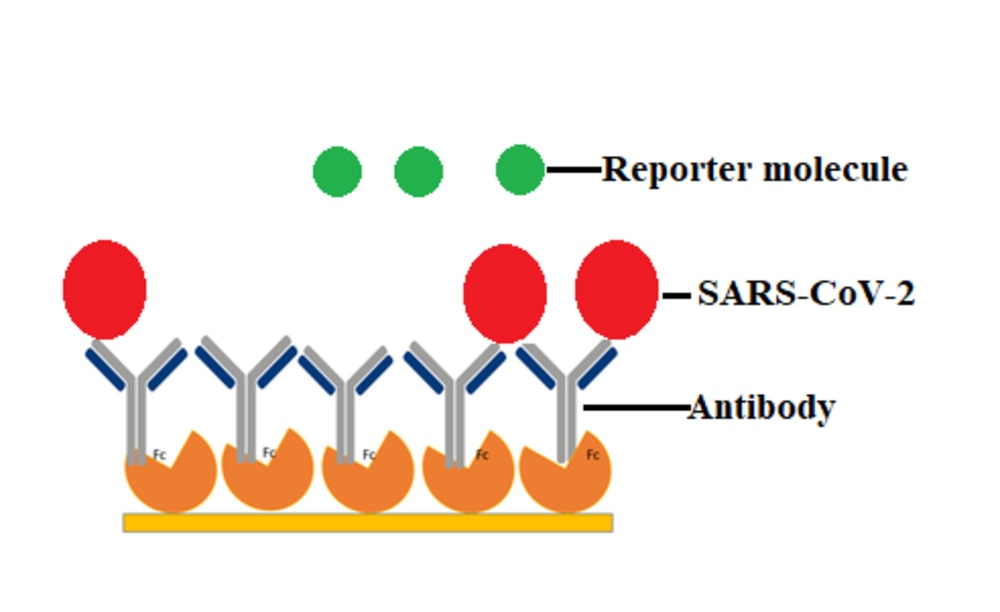There is an urgent need to develop a cost-effective and portable electrochemical biosensor for the early-stage detection of ARS-Corona Virus-2 (Sars-CoV-2). It would play a crucial role in the rapid screening of the Sars-CoV-2 carriers and can help to reduce the further spread of COVID-19 disease. The main characteristic of this device would be the diagnosis of symptomatic or asymptomatic carriers in a clinic.
The proposed solution consists of an immunodiagnostic assay where electrodes would be coated with an antibody specific to Sars-CoV-2. Antibody would bind through the Fc region. After the attachment of the antibody, the unoccupied sites on the surface of electrodes would be blocked to reduce any non-specific binding. The novel coronavirus belongs to a class of virus known as enveloped viruses. An enveloped virus houses its genetic material inside a fatty membrane studded with spiky proteins. The proteins help the virus gain access to the interior of the cell it infects. Coronaviruses have particularly large spikes. Coronavirus viruses are approximately 125 nanometers in diameter.
When test sample would be incubated, intact virions would be captured with the help this antibody-functionalized sensor. Finally, the number of virions captured would be assessed with the help of reporter molecules. There are three types of reporter molecules commercially available i.e. positive, negative, and neutral. Let’s suppose the overall charge on Sars-CoV-2 is negative, so , when we would incubate the negative reporter molecule, the signal would go down with the number of virions . As more and more virions would be captured by antibody-functionalized electrodes, these virions would repel the reporter molecule and signal would go further decrease. Similarly, if we utilize the positively charged reporter molecule , these reporter molecules would be attracted by the captured virions and signal would increase.
Based on the final detected signal, we can easily detect the virus present in the human bodily sample. This whole test would be very cost-effective and rapid. Furthermore, it can detect the presence of virus in asymptomatic patients.
Like this entry?
-
About the Entrant
- Name:Mazhar Sher
- Type of entry:individual
- Patent status:none

